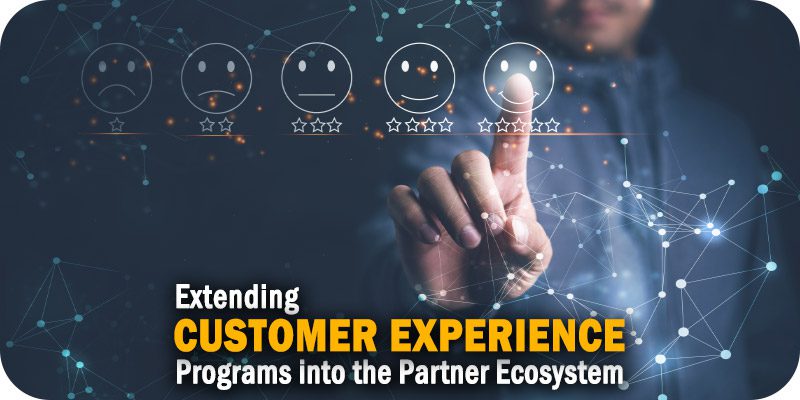Piercing the Partner Shadow: Extending Customer Experience Programs into the Partner Ecosystem


As part of Solutions Review’s Contributed Content Series—a collection of contributed columns written by industry experts in maturing software categories—Erik Vogel, the High Tech Industry Director at Qualtrics, shares insights on how companies can extend their customer experience programs into their partner ecosystems.
Firms with expansive partner ecosystems face a double-edged sword. On the one hand, partners provide a quick and efficient means to scale their business, enter new markets, and access skills and technologies that could take years to develop internally. On the other, firms are less able to control the experience being delivered to customers. While the partner might be providing the product or service, the parent firm’s name is still on the box, and poor delivery will negatively impact their reputation.
The solution? Start thinking about partners as customers and employees and build an experience management program that extends through partner channels to improve the experiences they are delivering to customers. Get it right, and the channel will return on the brand promise. Get it wrong, and risk a partner revolt.
Understanding and managing the experiences delivered by a partner ecosystem is a challenging prospect. Partners generally own the relationship with the end customer and are reluctant, if not unwilling, to share customer data. It’s also not uncommon for partners to compete, driving further reluctance to share information. And creating partner incentive programs aligned to the customer experience is difficult due to the subjective nature of experience metrics and inconsistencies in how data is collected and analyzed.
Through working with several high-tech companies with large partner ecosystems, my team and I have identified five effective strategies that a firm must employ to listen, analyze, and act on the experiences their partners are providing.
1) Treat Partners as Customers and Employees
Partners are, in many respects, a customer of the firm. As such, the firm needs to provide an excellent experience for partners to enable them to increase sales of products and services.
What might not be as intuitive is that partners also need to be treated as employees in that they need to be engaged, inspired, and valued as extensions of the firm itself. Incorporating best practices from programs that listen to both customer and employee voices can reveal insights into their experiences and prompt actions that close experience gaps and support the development of world-class partnership programs.
2) Centralize Partner Programs
Data about customer interactions—including survey distribution lists and email frequency—is valuable, meaning partners will want that data shielded from their competitors. However, this data is essential to benchmark the experiences partners provide and will need to be obtained in any successful partner program.
Centralizing that customer data is critical to companies that want to drive consistent methodologies and approaches, enable effective benchmarking across partners, and provide reliable data protection and security. It also allows smaller firms to access enterprise-grade experience programs and technology when they might not be able to deliver it themselves.
3) Update Partner Incentive Programs
Early versions of partner experience programs focused on punitive outcomes for partners that did not meet the expectations of the parent firm. For example, without meeting specific metrics, partners may have been prevented from moving to gold from silver status. As a result, partners learned to game the feedback system.
Instead, leading programs focus on helping partners access the benefits of experience management and grow and retain their customer base. Effective customer experience programs are a crucial differentiator for partners in competitive markets and can become part of an incentive program that focuses on customer retention and expansion.
4) Give Partners a Seat at the Table
Every partner ecosystem is unique, and there is no one-size-fits-all approach. Most partner ecosystems are mixed in terms of levels of sophistication—some partners have mature experience management programs, while less mature partners may have nothing in place.
It’s unreasonable to think that every partner will be included in developing programs, especially in cases where partners can reach tens of thousands globally. Instead, partners should be segmented by relationship, product portfolio, and geography, with key partners from each segment being consulted. As the partner program is developed, it must be communicated to others. The best practice is to focus first on partners with the most significant impact and build the program with them at the table.
5) Change Management Plays a Critical Role
Our experience has repeatedly shown that effective transformation teams over-communicate with partners. Partners have legitimate concerns about how and why experience programs are being launched, and effective change management will provide a structural model to address these concerns. Several models have demonstrated effective results, including developing partner advisory boards, leveraging third-party communication support, and building a dedicated partner change management function.
Piercing the partner shadow as it relates to experience management is a complex and challenging problem that requires bringing partners to the table and providing them with the value of experience management. As more business is transacted through partners, successful programs gain the benefits of experience management at scale by increasing customer lifetime value, retention, and loyalty while ensuring that a firm’s brand promise is met through its partner ecosystem.





















